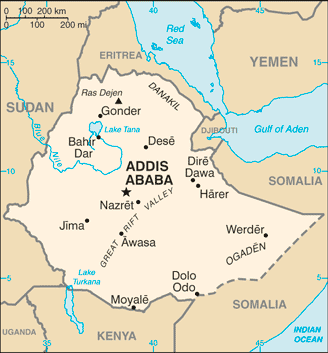By NewsDesk @infectiousdiseasenews
In a follow-up on the chikungunya outbreak in Dire-Dawa, Ethiopia, health officials report an additional 5,500 cases in the week ending September 15, bringing the outbreak total to 40,340 since late July.

Image/CIA
Cases have been reported from all kebeles, or neighborhoods in the Dire Dawa city administration, which has a population of 335,000.
This is the second chikungunya outbreak in Ethiopia, the last was in the summer of 2016.
The outbreak comes at a time when Ethiopia is facing numerous other health emergencies that are stretching the limited resources available, including a humanitarian crisis, malnutrition, cholera, dengue fever and measles outbreaks.
Chikungunya is a viral disease transmitted to humans by infected mosquitoes. It causes fever and severe joint pain, which is often debilitating. Other symptoms include muscle pain, headache, nausea, fatigue, and rash.
The disease shares some clinical signs with dengue and Zika, and can be misdiagnosed in areas where they are common. As there is no cure, treatment is focused on relieving the symptoms.
- Sri Lanka: Colombo dengue cases top 10K, South-west monsoon behind the rise in cases
- Pennsylvania reports decrease in Lyme disease in 2018
- College of Charleston: Health officials declare mumps outbreak
- Salmonella cases reported at the University of Maryland
- Brazil ramps up MMR vaccine purchase while facing measles surge
- African swine fever: New outbreaks in China, South Korea and the Philippines

